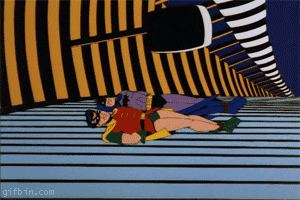Try to project the following scenario:
In the year 2018, a bunch of guysat Musikmesse or NAMMor some other music production environment try out different DAWs and tools. Renoise 4.0 has just been released and they demo it for the first time. They drag a couple of audio files into it andplace them out in the conventional horizontal arranger. Theydrag and dropa VST instrument and enter some notes for in the conventional piano roll. Everything is so conventional, so familiar, so… fast. Now the presenter of Renoise clicks on an audio file’s visual representation block in the arranger, and switch into tracker precision editing mode. He places out some alpha-numerical values into columns and hits playback. The audiofile is pitched downand hasvibrato. The bunch of guys who’re demoing Renoise are impressed with thisdetailed level of control and editing. Theysee a new tool for music production that doesn’t havea steep learning curve and requiresa completely new and differenthabitualmindset to handle.
A year later, the same guys have experimented with the tracker’s alphanumerical concepts and learned how to enter notes directly in the pattern editor rather than in theold pianoroll. Granted, they still switch to piano roll overview for faster handling of chords and such. But most other stuff is inputted directly in the pattern editor, using tracker notation. In their other DAWs, theyfire up Redux and feel confident about its tracker concepts.
Now isn’t thisexactly what will make Renoise 4.0 both a commercial success andopenup the world oftrackers to many, many more people around the world? Would you agree that pianoroll, audiotracks and linear arranger are the required core features that would introduce thetracker to 1000x more producers simply based on the familiarity factor alone?
Look, I’m a hardcore tracker guy myself who used to piss on conventionalpianorollswhile rationalizing them as symbols of conformity and stupidity.Like many others I’ve used trackers since that late 1980’s, starting out with Noisetracker on the Amigain 1989. But it’s time to understand that most people doesn’t carry around 25+ years of experience with trackers. And if 99.9% of all music producers are familiar with certain DAW concepts that are lacking in Renoise, it means 99.9% of all music producers probably won’t try out Renoise and give it the time required to learn tracking from the ground up (nor Redux, actually). A future Renoise 4.0 with such familiar conventional stuff as linear arranger, audiotracks and pianoroll would build a bridge over to the 99.9% of all music producers and thereby making it possible for so many more people to learn tracking from an instant gratificationist,productive and user-friendly experience.
This is my perspective and my answer to the question:How to attract more people into tracking?
So what’s your perspective and answer to this question?
Also, does anyone know what the developers themselves conclude in regard to these issues? Are we looking at a future for Renoise following the exact same development paceand business model as the last 14 years?


